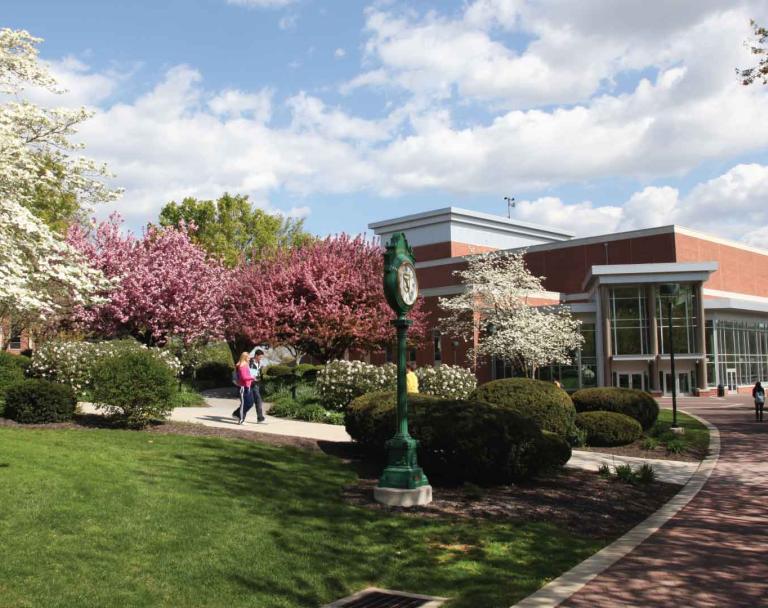Arianna Evans

York College Student Studies the Intrusive Nature of Stray Cats
While most people are tempted to feed the neighborhood stray cat, doing so can wreak havoc on the local ecosystem, says Arianna Evans ’21.
They kill billions of small mammals each year. They’re known to take out local bird populations. If we aren’t careful, they can multiply. The four-legged predators that Arianna Evans ’21 studied as a Biology major at York College of Pennsylvania might seem harmless, but the truth is, she says, stray cats can do major damage to a local ecosystem.
“Most people see a stray cat, and their first instinct is to feed it or set up an outdoor shelter for it,” Evans says. “While the cat may appreciate the accommodations, it’s incredibly harmful for the rest of nature.”
Many people look at a house cat and think it’s related to wild cats, such as lions, much like a dog might be related to wolves. So, why can’t we let a house cat lean into its natural instincts to hunt? The answer, Evans says, is because house cats are invasive species, often having major consequences on the populations of other species.
Following the felines
With hopes of becoming a veterinarian, Evans took her interest in stray cats as an opportunity to explore their impact in York County as part of an undergraduate research study. Camera equipment was set up in two area parks—John C. Rudy County Park and Richard M. Nixon County Park—and Evans got to work keeping an eye peeled for wandering cats.
She also interviewed residents who live near each park, learning about the types of animals they saw and how they responded to seeing cats in their neighborhoods. While there wasn’t much cat activity at Richard M. Nixon County Park, Evans was able to identify about seven or eight different cats at John C. Rudy County Park based on coat patterns and other physical features.
Residents shared that some neighbors often fed the cats. In years past, one was feeding up to 35 cats—a sizeable colony that can cause considerable damage to an ecosystem.
In her job at a veterinarian hospital, Evans sees some cats come in with bite marks and other injuries because they are left outside when they should be kept indoors.
“We have to stop thinking of these domesticated animals as wild animals,” Evans says. “If I can do anything through this research, I want to educate people on how to respond differently to stray cats.”
Changing the story
The best way to eliminate stray cat populations is with a capture and release program that will help veterinary providers spay and neuter cats and then release, Evans says. This doesn’t force the animals to become domestic, sometimes after a lifetime of being on their own, but it does help control the population.
As she gets ready to head to Atlantic Veterinary College at the University of Prince Edward Island, Evans is carrying this research as a reminder of how important projects like this are to the field of biology and animal care.
“This gave me an opportunity to be independent in my learning and challenge myself to explore new areas,” she says. “It helped prepare me for what’s to come in my career, and I’m grateful to York College for that."

